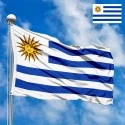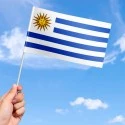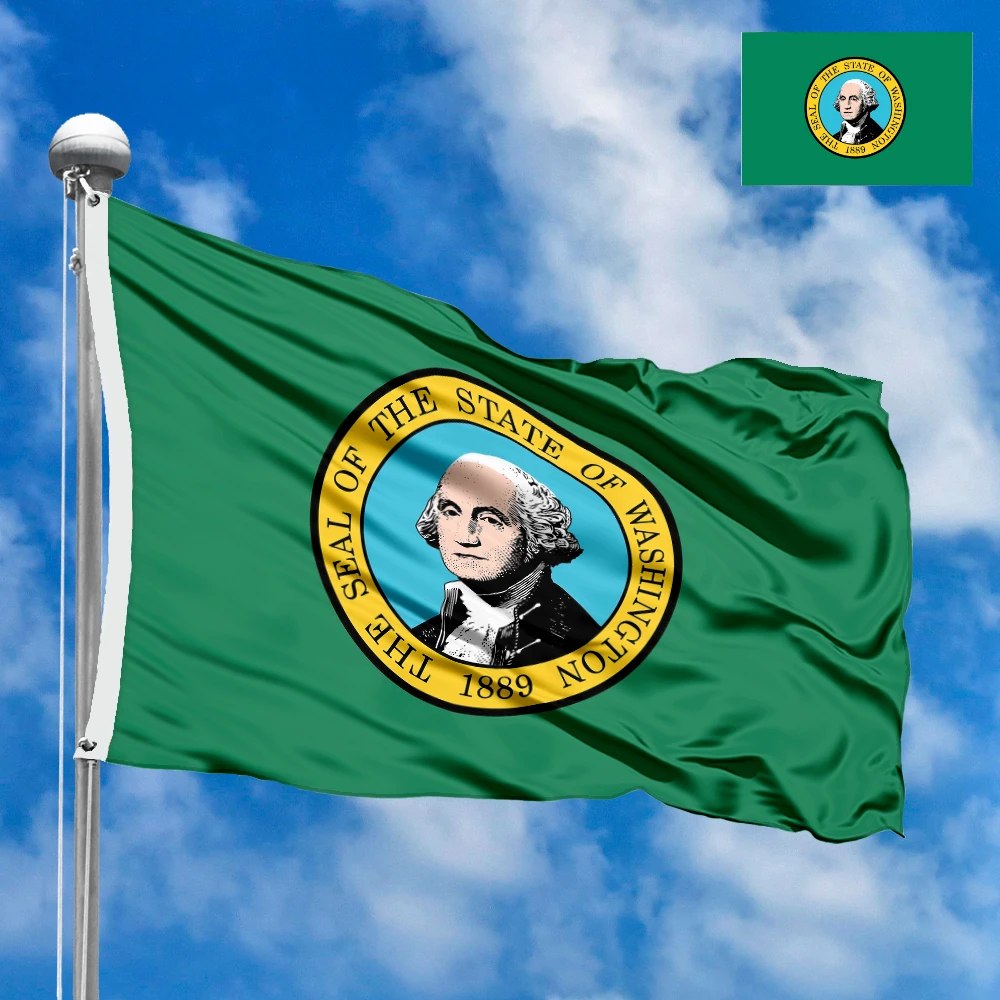The flag of Uruguay is one of the most recognizable national symbols in Latin America, embodying the country's long journey to independence, its democratic values, and its historical roots. Its design combines elements inspired by the flags of the United States and Argentina, creating a unique national symbol. Officially adopted in 1830, the flag reflects the unity and freedom of the Uruguayan people.
A Detailed Look at the Flag's Design and Symbolism
The national flag of Uruguay, also known as the "Pabellón Nacional," is composed of nine equal horizontal stripes, alternating between white and sky-blue. There are five white stripes and four blue stripes. In the upper-left corner, there is a white square canton containing a golden sun with a human face. This sun is known as the Sun of May.
Each element of the flag is rich with symbolism, telling a story of the nation's history and identity:
-
The Nine Stripes: The nine horizontal stripes represent the nine original departments that made up Uruguay when the flag was first adopted. This design choice was influenced by the flag of the United States, symbolizing a federal republic of equal states.
-
Blue and White Colors: The colors blue and white are a direct nod to the flag of the United Provinces of the Río de la Plata, the political entity from which Uruguay declared its independence. These colors have become traditional symbols of freedom and independence for the nations of this region. Blue represents the sky, and white represents the clouds and peace.
-
The Sun of May: The most prominent and significant element of the flag is the Sun of May, a radiant sun with a human face. It is a powerful symbol of independence and sovereignty. The sun has 16 alternating straight and wavy rays.
-
History of the Symbol: The Sun of May has a dual meaning. It represents the Incan sun god Inti, a pre-Columbian symbol of power and life. More importantly for Uruguay, it commemorates the May Revolution of 1810, which marked the beginning of the independence process for the nations of the Río de la Plata region. The sun "rising" in May symbolizes the dawn of a new era of freedom.
-
Appearance: The sun's human face is a classic representation, similar to other national symbols in the region, such as on the flag of Argentina. Its smiling face symbolizes a bright and prosperous future for the country.
The History and Adoption of the Flag
The history of the Uruguayan flag is a story of political and military struggles. After declaring independence from the Empire of Brazil in 1825, Uruguay initially used a flag that was more similar to the Argentine flag. However, as the country sought to establish its own distinct identity and consolidate its sovereignty, a new flag was needed.
The current design was created by Joaquín Suárez, a prominent Uruguayan political figure. It was officially adopted on July 16, 1830, coinciding with the signing of the first constitution of the newly independent republic. The flag's design was a deliberate attempt to honor its past connections (the blue and white stripes from the Argentine flag) while establishing its own unique identity (the nine stripes representing its own provinces and the Sun of May, which had become a symbol of shared regional liberation).
The choice of nine stripes, representing the original departments of Uruguay, was a key feature that differentiated it from the Argentine flag and affirmed its new status as a sovereign nation.
Meaning and Significance for Residents
For the people of Uruguay, the flag is a beloved symbol of their identity, democratic values, and history. The nine stripes represent the collective will and unity of the people, who are all equal parts of the nation. The Sun of May is a constant reminder of the hard-won independence and the country's bright future. The flag is a source of national pride, displayed prominently during public events, national holidays like Independence Day (August 25th), and sporting events. It signifies a peaceful and stable democracy in a region often marked by turmoil, and it embodies the spirit of a people proud of their heritage and their autonomy.
Interesting Facts
-
The flag of Uruguay is one of the few national flags that feature a sun with a human face, sharing this distinction with Argentina.
-
The design with the nine stripes is often compared to the flag of Greece, which also uses a pattern of alternating blue and white stripes. However, the meaning behind the stripes is entirely different.
-
The Uruguayan flag has undergone several changes throughout its history, with different numbers of stripes and different sun designs being used before the current version was finalized.
-
The flag is legally protected, and there are strict protocols for its display and handling. It is a revered national symbol, and any disrespect toward it is considered a serious offense.
-
The flag is one of three official flags of Uruguay, alongside the flag of Artigas and the flag of the Treinta y Tres Orientales, which are also used for ceremonial purposes.
In the demonstration images, full-size flags are shown with proportions of 2:3, and hand-held flags with proportions of 1:2.









 Waving flag
Waving flag
 Sizes:
Sizes:
 Round flag
Round flag
 Sizes:
Sizes:
 Rectangular flag 2:3
Rectangular flag 2:3
 Sizes:
Sizes: